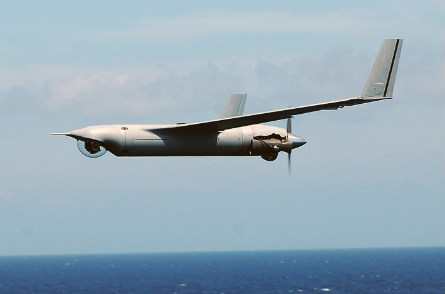The UK Ministry of Defence was due to receive responses by 28 August from contractors interested in bidding for a maritime unmanned air system deal worth £40 million ($63 million).
Dubbed "MarUAS", the project seeks a commercial off-the-shelf design capable of meeting an urgent operational requirement to deliver persistent intelligence, surveillance and reconnaissance (ISR) cover when deployed from a naval vessel.
To be provided as a contractor-owned, contractor-operated system, the UAS should have a loiter time of 8h while operating 111km (60nm) from its launch platform, the UK's Defence Equipment and Support (DE&S) organisation says. Candidate air vehicles should carry an electro-optical/infrared sensor, and have the performance required to track fast-moving surface targets. Further capabilities could potentially include a maritime radar and automatic identification system receiver, it adds.
The selected type will initially be based aboard a Royal Fleet Auxiliary vessel, and subsequently on the Royal Navy's Type 23 frigates. "The system must be able to operate alongside an existing aviation detachment," according to a draft requirements document released in mid-August.
 |
|---|
Boeing The UK has previously trialled the Boeing/Insitu ScanEagle |
The UK is initially seeking one "task line" capable of providing 300h of ISR coverage per month, day or night, but will increase this to two such lines around six months after declaring initial operating capability with the MarUAS equipment. It will also require the contractor to support surge operations, if needed.
Between three and five bidders will be invited to tender for the initially two-year deal, with these due to receive full information about the MoD's requirements on 3 October.
Potential candidates include the Boeing/Insitu ScanEagle. A UK trials unit assessed the type's compatibility with the Type 23 vessel HMS Sutherland in 2005, with its work having included controlling the air vehicle from onboard the ship.
Source: Flight International



















